Motion and Training
Why Motion?
Endurance. Power. Technique.
When these three core skills come together, riders have the key ingredients to reach their maximum performance potential. Though endurance and power are universally used as the basis for cycling training, technique has been a challenging element to measure. Skills such as pedaling, positioning, breathing, muscle de-tension, cornering, and sprinting are all qualitative cycling elements.
Thankfully, coaches know good pedaling skills and form when they witness it. With the TYPE-S’s Motion Performance Indicators, or MPIs, coaches will now have actual values to validate their observations. MPIs give an edge to assessments by making them more precise, more communicable, and more trackable. MPIs measure various motions related to cycling, and by using them, coaches and athletes can:
Perform a deep analysis of movement versus power, cadence, and fatigue.
Establish baselines for various physical conditions and situations.
Discover clues to improving both fitness and technique.
Since everyone’s bodies and riding environments are different, each person has their own baseline values, similar to FTP. LEOMO is working with world-class coaches and research centers to continue to improve and expand MPIs to help coaches zero in on the analysis of technique.
Motion Performance Indicators
The TYPE-S comes with five LEOMO Motion Sensors and records several types of Motion Performance Indicators (MPIs).

Pelvic
1. Pelvic Angle
2. Pelvic Rotation
3. Pelvic Rock
Right & Left Leg
1. Leg Angular Range
Torso
1. Torso Angle
2. Torso Rotation
3. Torso Rock
Right & Left Foot
1. Dead Spot Score
2. Foot Angular Range
3. Foot Angular Range (Q1)
Dead Spot Score (DSS)
Summary
Dead Spot Scores (DSS) pinpoint the magnitude and locations where pedaling velocities lack smoothness along the left and right pedaling cycle.
Lack of smoothness is a secondary symptom of sub-optimal pedaling motions.
Looking at the right and left DSS values provides insight to left/right movement imbalances.
Details
A “dead spot” is where pedaling power is lost when sub-optimally shifting from one movement pattern to another during a pedaling stroke (such as the shift between the power and recovery phase).
Optimal pedaling motions are smooth and put less stress on the body than sub-optimal pedaling motions. DSS is measured by the foot’s angular velocity, where any deviation from a smooth angular velocity sine curve is considered a dead spot. Each dead spot is represented along the pedaling cycle by a filled circle, and a circle’s size indicates the magnitude of deviation.
Since dead spots are caused by many factors, a trained coach must find the primary cause of a high DSS. One known cause of a high DSS is the overuse of less powerful secondary muscles (such as hamstrings) over larger primary muscles (such as the glutes).
Score
The center value shows the total sum of magnitudes (measured in degrees/sec) of the dead spots that occurred in a single pedaling cycle. Each dead spot is represented along the pedaling stroke, with the size showing the magnitude of deviation from a smooth angular velocity.
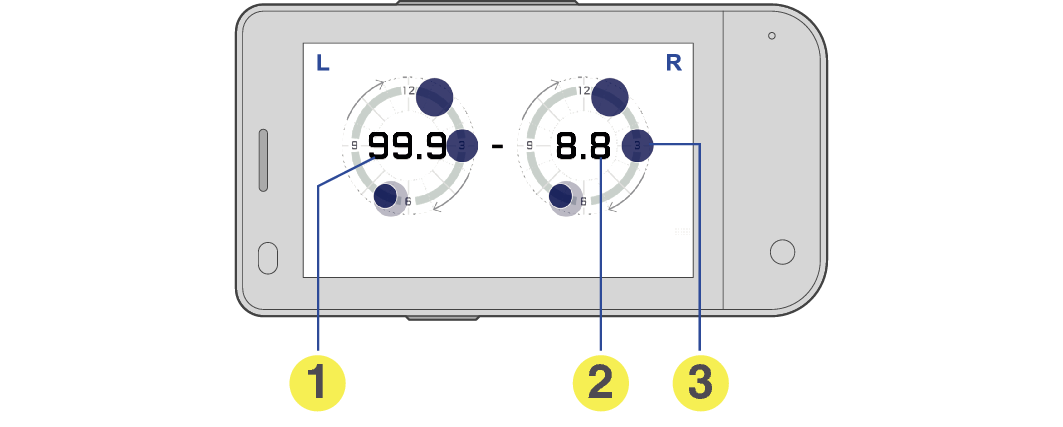
Display
<Back
Front>
-
Left DSS (total for one cycle)
-
Right DSS (total for one cycle)
-
Dead spot location and magnitude
(Dark circle = last cycle,
Light circle = previous cycles)
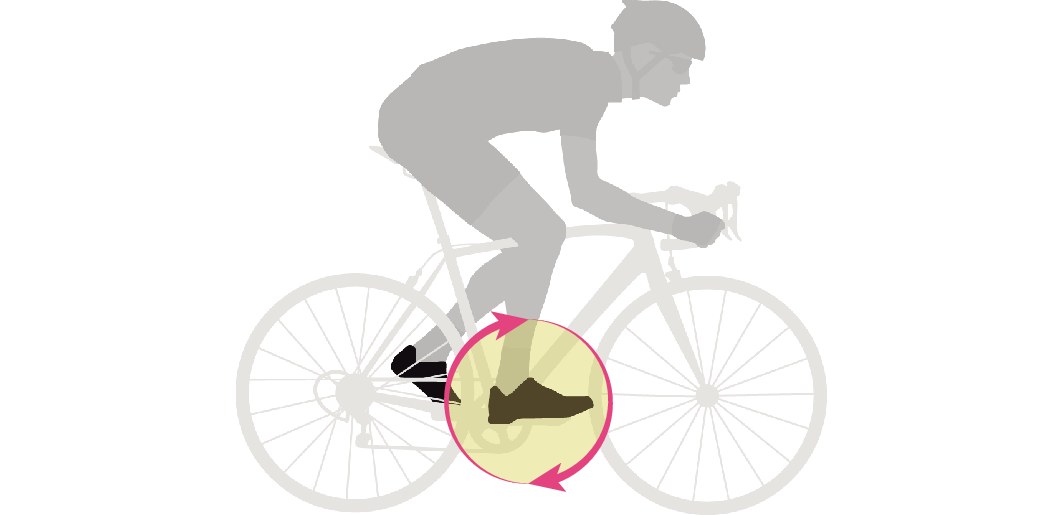
Motion
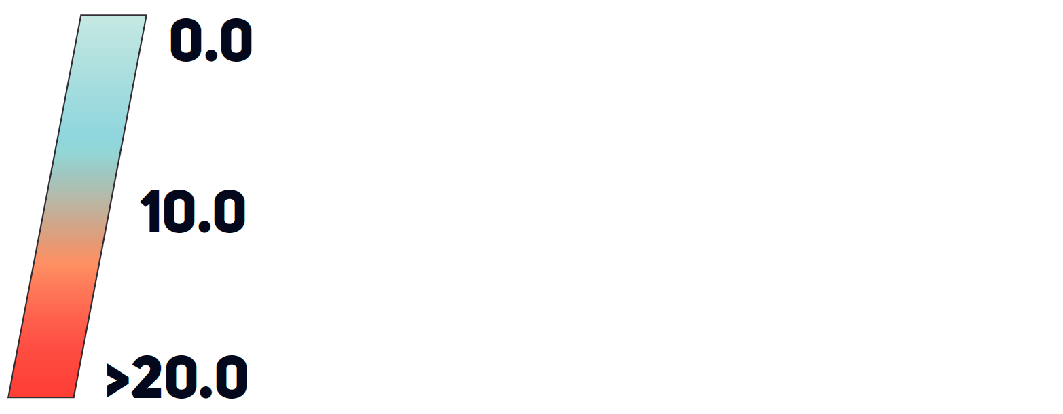
Rating
Optimum pedaling with little to no dead spots
Unsmooth pedaling
Extremely unsmooth pedaling
Leg Angular Range (LEG AR)
Summary
Leg Angular Range measures how much the thighs move up and down while pedaling.
Looking at right and left Leg AR values provides insight to left/right movement imbalances.
Details
The Leg Angular Range is calculated by subtracting the angle of the thigh at its lowest point from that at its highest point. Athletes should attempt to maximize their Leg Angular Range without sacrificing a stable pelvic tilt or an aggressive torso angle. Leg Angular Range should not be increased using incorrect form or bad bike fit, such as by hyper-extension of the knee, a low saddle height, increasing the Foot Angular Range, or crank lengthening, etc.
Score
The up-to-down angular range of the left and right thighs (with the hip as the vertex) in a pedaling stroke is expressed in degrees.

Display
-
Left leg angular range
-
Right leg angular range
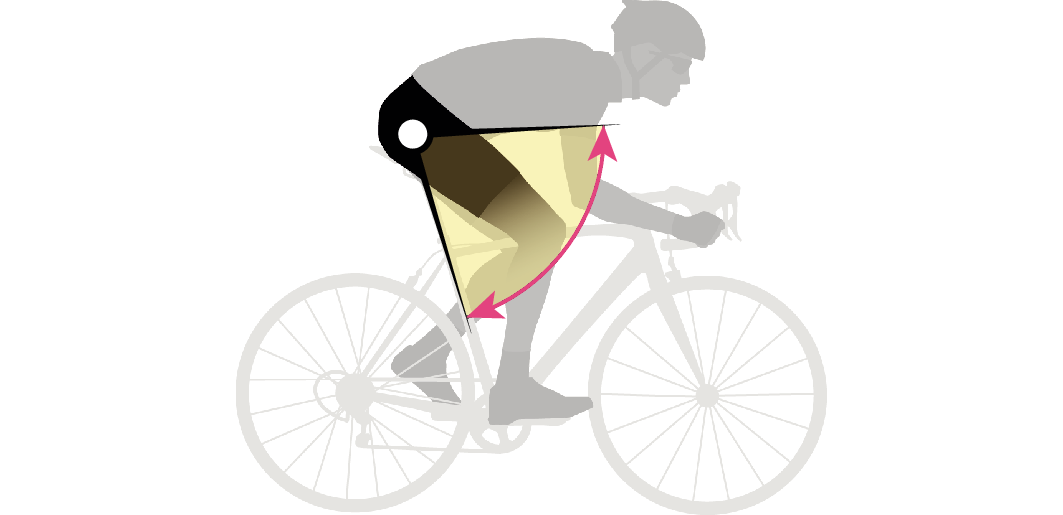
Motion

Rating
Small range
Normal range
Large range
Foot Angular Range (FOOT AR)
Summary
Foot Angular Range measures how much the heel moves up and down while pedaling.
Looking at the right and left Foot AR values provides insight to left/right movement imbalances.
Details
The Foot Angular Range is calculated by subtracting the angle of the foot at its lowest point from that at its highest point. This score is mainly used for characterizing an athlete’s pedaling. The larger the Foot Angular Range, the higher the heels rise during the 9 - 12 o’clock phase, and the more that ankling occurs between 0 - 6 o’clock.
Score
The up-to-down angular range of the foot (with the pedal as the vertex) in a pedaling stroke is expressed in degrees. The lower the range, the easier it is for the leg to transfer power to the pedal.

Display
-
Left foot angular range
-
Right foot angular range

Motion

Rating
Static range
General range
Very dynamic range
Foot Angular Range (Q1) Foot AR (Q1)
Summary
Foot Angular Range (Q1) shows the foot angular range of the first quadrant of the pedaling cycle (12 o’clock to 3 o’clock position).
Looking at the right and left Foot AR (Q1) values provides insight to left/right movement imbalances.
Details
A large Foot AR (Q1) shows that the cyclist pushes down hard after the 12 o’clock position, creating thrust around the 1 and 2 o’clock positions. By pushing down earlier, near the 12 o’clock position, the cyclist minimizes the total angle the foot shifts between the 12 and 3 o’clock position.
Score
Foot Angular Range (Q1) measures the range of angular movement that occurs between the 12 and 3 o’clock position. The higher the range, the longer the delay for the “push down” motion to start for the power phase.

Display
-
Left foot AR (Q1)
-
Right foot AR (Q1)

Motion

Rating
Small movement in Q1
Large movement in Q1
Pelvic Angle
Summary
Pelvic Angle indicates the degree to which the pelvis is tilted upward. The sensor should be fixed with adhesive on the lower back in the area of the sacrum.
Details
Each cyclist has a different neutral pelvic alignment. Finding a natural pelvis position engages the core muscles and reduces lumbar spine strain. Coaches have observed that riders with an upright Pelvic Angle have a higher chance of back injury.
If the pelvis is tilted too far back, lumbar strain can occur, and if the pelvis is tilted too far forward, maximum Leg Angular Range cannot be achieved. Also, posterior rotation of the pelvis reduces power generation capability.
Score
The front-to-back (z-axis) angle of the hip is expressed relative to gravity. Straight up is 90 degrees, while 0 degrees is parallel to the ground*.
* Assuming that the cyclist is on flat ground.
Climbing, descent, and velodrome riding: remember that the Pelvic Angle score does not represent the angle relative to the bicycle or the ground, but to the direction of gravity. Therefore, care is necessary when verifying the data from banked or graded sections, such as those encountered with climbing, descent, and velodrome riding.

Display
Pelvic angle

Motion

Rating
Parallel to ground*
*Assuming that the cyclist is on flat ground.
Upright
Pelvic Rock
Summary
Pelvic Rock measures the average up-down angular movement of the pelvis.
Details
Pelvic Rock represents the average angular rotational range along the pelvis’ local sagittal axis (the axis that intersects the pelvis from front to back). When sitting up on flat ground, this front-to-back axis is parallel to the ground; when in riding position, this axis will tilt toward the base of the front wheel.
Score
Each clockwise and counterclockwise rotation occurring each second is recorded and then averaged. This motion is commonly known as “rocking on the saddle.”

Display
Pelvic rock

Motion

Rating
No rotation
Too much rotation
Pelvic Rotation
Summary
Pelvic Rotation measures the average angular rotational range of the pelvis.
Details
Pelvic Rotation is the average angular rotational range of the pelvis, measured at the sacrum once per second. This measurement is dependent on the sacrum’s local vertical axis, which will be perpendicular to the ground when sitting up and that may tilt toward the handlebars when in riding position.
This motion can also be described as the anterior to posterior rotation of the pelvis along the transverse plane.
A larger Pelvic Rotation value indicates greater average rotation of the pelvis, and a lower value indicates more limited average rotation.
Score
Each clockwise and counterclockwise rotation occurring each second is recorded and then averaged.
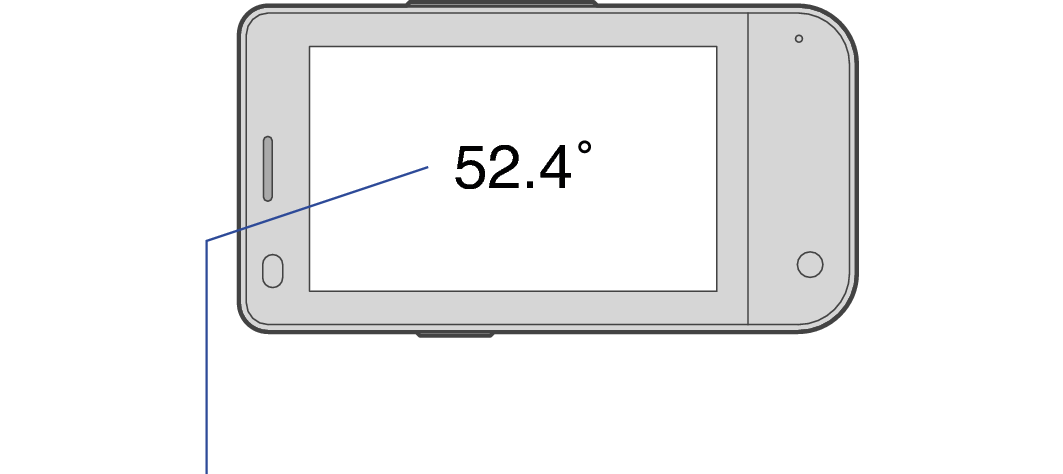
Display
Pelvic rotation

Motion

Rating
No rotation
Too much rotation
Torso Angle
Summary
Torso Angle indicates in degrees how much the chest (i.e. torso) is tilted upward relative to gravity. The sensor should be affixed along the sternum with an adhesive.
Details
Torso Angle indicates the angle of the sternum relative to gravity. Generally speaking, Torso Angle decreases when riding in an aero position (upper body angled toward the ground) and increases when riding in a more upright position.
Intentional form change is not the only factor that affects Torso Angle; slight changes due to the influences of power, fatigue, and other factors also affect Torso Angle. For instance, when doing two-minute intervals, Torso Angle is likely to change since it will be difficult to keep a stable chest position as fatigue sets in.
Score
Torso Angle is expressed as the angle of the chest relative to gravity. Sitting with the chest perpendicular to gravity will yield a 90° value, and a 0° value indicates that the chest is parallel to gravity.
Climbing, descent, and velodrome riding: remember that the Torso Angle score does not represent the angle relative to the bicycle or the ground, but to the direction of gravity. Therefore, care is necessary when verifying the data from banked or graded sections, such as those encountered with climbing, descent, and velodrome riding.

Display
Torso angle
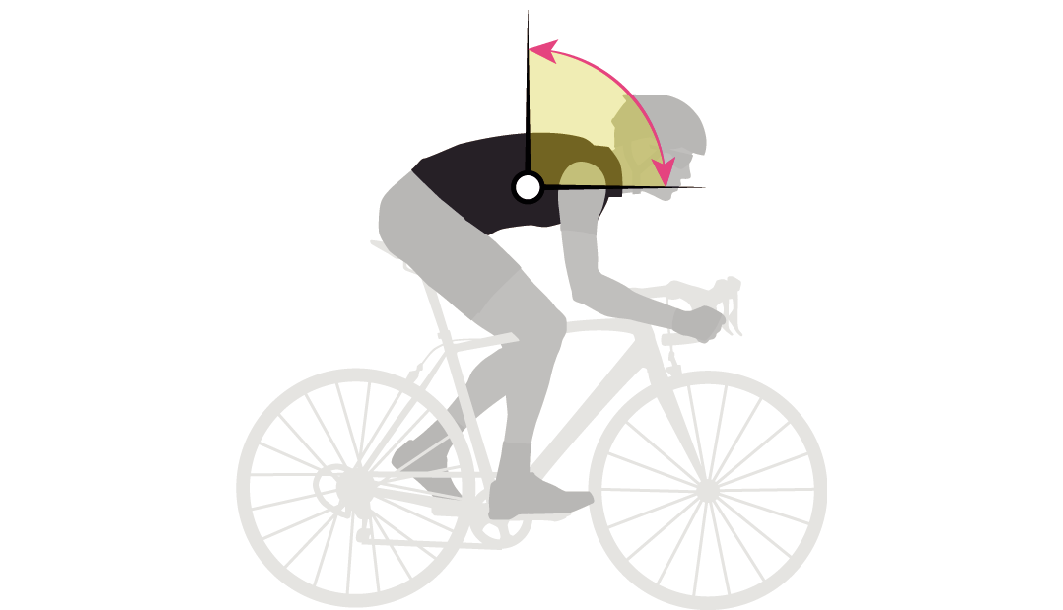
Motion

Rating
Parallel to gravity
Upright, perpendicular to gravity
Torso Rock
Summary
Torso Rock measures the average angular rotational range of the chest to the left and right.
Details
Torso Rock represents the average angular rotational range of the torso, measured at the sternum once per second along the local sagittal axis (the sagittal axis intersects the lower back and the abdomen area above the pelvis).
A larger Torso Rock value indicates higher average torso rotation and a lower value indicates more limited rotation. Although torso movement from side to side can generally be called “rocking,” it is important to note that the amount of rocking observed is dependent on both Torso Rock and Pelvic Rock.
Score
Each clockwise and counterclockwise rotation occurring each second is recorded and averaged, resulting in an angular score.

Display
Torso rock

Motion

Rating
Torso Rotation
Summary
Torso Rotation measures the average angular rotational range of the chest.
Details
Torso Rotation is the average angular rotational range of the chest, measured at the sternum once per second. This measurement is dependent on the torso’s rotational axis, which closely parallels the spine: when sitting up, the spine/rotational axis will be vertical (perpendicular to the ground), and when in riding position, the spine/rotational axis will tilt toward the handlebars.
A larger Torso Rotation value indicates greater average rotation of the torso, and a lower value indicates more limited average rotation. Although this motion might be thought of as being similar to twisting of the torso, it is important to note that the amount of “twisting” is dependent on actual torso rotation and pelvic rotation at the time of measurement.
Score
Each clockwise and counterclockwise rotation occurring within a second is recorded and averaged, resulting in an angular score.

Display
Torso rotation

Motion

Rating
